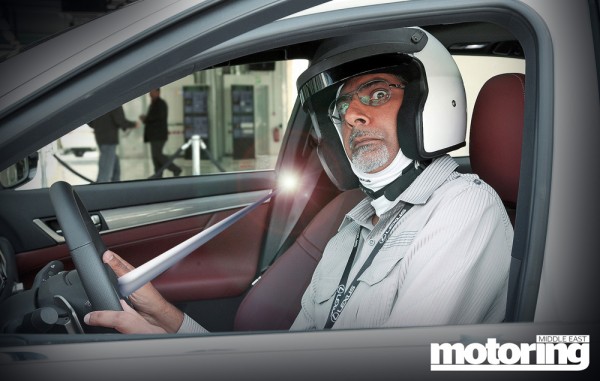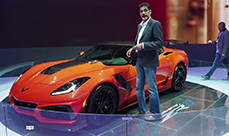To drive or let the car do it – that IS the question
Inevitably eradicating responsibility
By Shahzad Sheikh

The best safety feature in a car is to have a spike sticking out of the steering wheel and pointing at your face - see how careful THAT makes you!
Recently I got to blast around Yas Marina circuit in the new Lexus GS (read the review here) and it left me nursing a crick in the neck. Not because it was bad, but because it was brilliant.
That happened when development driver and Lexus Meister, Yoshiaki Ito, (one of only three ‘Meisters’ in the Toyota Corporation) suddenly swerved hard right and then left at speeds of over 160kph towards the end of the long-straight at Yas Marina. It was a dramatic demonstration of the executive saloon’s high-speed stability.
I didn’t really mind the crick, to be honest. Instead I found myself pondering the extraordinary physics-defying abilities of the latest offering from Lexus. And it wasn’t just the hard lane-change simulation. I’d run the car myself through a slalom earlier, and try as I might, chucking it as hard and as violently through the tight set of cones as I dared, I never took one out.
I should have ended the session feeling pretty pleased with myself, for being able to take a rear-wheel drive car by the scruff and skilfully manhandle any wayward rear traction, catching it each time the rear broke away, and still managing a change of direction, whilst remaining on the throttle the whole time. That sort of thing takes real skill.
Except that it didn’t take any skill at all. Lexus call it LDH and all sorts of fancy terminology. In fact the GS in F-Sport guise boasts one of the most intelligent editions of active rear-wheel steering I’ve ever witnessed or experienced. Through all sorts of computer-chip-controlled cleverness it can not only steer the back wheels through 2 degrees to aid the car’s stability, but even take over the physical steering at the front to correct slides and ensure stability in fast bends.
Ultimately the car is getting close to idiot-proof in its ability to make fast manoeuvres in an accident-avoidance scenario. Obviously it also makes it easier to round tight corners and slot into parking spaces. ‘This is absolutely genius’, you say, ‘and a boon for road safety’. And you’re wholly right of course.
So why do I lament the arrival of yet more such systems and drivers’ aids in the relentless march of technology towards eventually producing a fool-proof car that will drive itself, to ensure you don’t crash it?
Because I believe that it actually makes us more dangerous on the roads. Knowing that you’ll be able to avoid almost any eventually before you, means you’re paying less attention to what lies ahead.
With the advent of cruise control (active and non), blind spot indicators, lane-keeping assists, rear cameras, self-parking tech, cars that will bring themselves to a complete halt and even gadgets to monitor if you’re about to fall asleep, if just means that drivers can feel less and less obliged to take responsibility for actually driving their cars, and get on their phones and Facebook instead. That causes carelessness behind the wheel and as we all know: carelessness causes accidents.
As they used to say, the best safety device of all, would be a long sharp spike coming out of the steering wheel and pointing at your face. Oh, now THAT would make you drive carefully wouldn’t it?



Really good article…… really puts into perspective when your going thru corners at 200-220 kph, and those very computers save you…..but the person driving did have real skill……
finally, my current ride actually does not have ANY computers….down to no cruise control……careful driver =thats me!